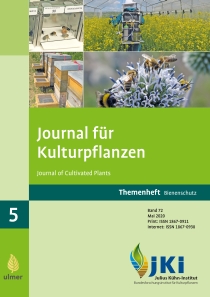Assessing the efficacy of bee promoting measures (Hymenoptera, Apiformes) along an urban-rural gradient
DOI:
https://doi.org/10.5073/JfK.2020.05.07Keywords:
bees, Hymenoptera, conservation, measure, urban, rural, gradientAbstract
Cities are emerging as refugia for pollinators, among which bees play a pivotal role for maintaining ecosystem functioning in agricultural and urban settings. While measures to promote bees have been investigated predominantly in the agricultural or rural context, a wide knowledge gap persists with regard to the effectiveness of such measures within urban landscapes. In order to guide research addressing this lack of knowledge, the aim of this perspective paper is to give an overview of the recent research activities based on the published peer-reviewed literature. While research on flower seed mixtures in general focuses on nutritional aspects, studies on plantings of perennial herbs are relatively limited to few plant taxa. Implementation of comparable case studies investigating the effects of tree plantings on bee populations is hampered by a lack of methodological standardization. The conservation value of providing nesting sites in cities needs to be further investigated, in particular concerning ground-nesting bee species. While several case studies indicate a nutritional supporting function of green roofs for urban bee populations, findings with regard to vertical isolation remain equivocal. Various factors driving bee diversity and population structure in the urban context at the local and landscape scale have been identified, the reported relevant landscape scale being represented by radii between 500 and 1000 m in most cases. Future study designs reflecting a continuous and complete gradient of urbanization will be helpful in comparing results on bee promoting measures in agricultural landscapes (which are numerous) to urban settings (which are still encountered much less frequently). Studies looking into the genetic structure of bee populations with regard to urbanization so far represent only a tiny fraction of bee diversity, and the further development of molecular methods could yield novel tools for assessing the success of bee promoting measures in terms of habitat connectivity in the near future.
Published
Issue
Section
License
The content of the journal is licensed under the Creative Commons Attribution 4.0 License. Any user is free to share and adapt (remix, transform, build upon) the content as long as the original publication is attributed (authors, title, year, journal, issue, pages).
The copyright of the published work remains with the authors. The authors grant the Journal of Cultivated Plants, the Julius Kühn-Institut and the OpenAgrar repository the non-exclusive right to distribute and exploit the work.







